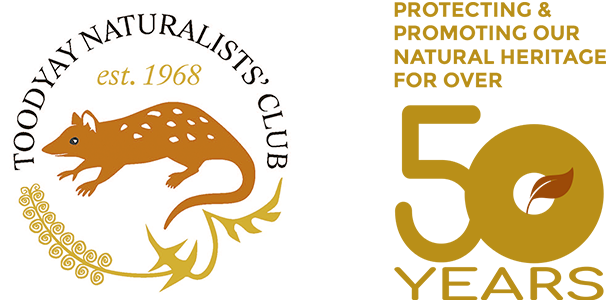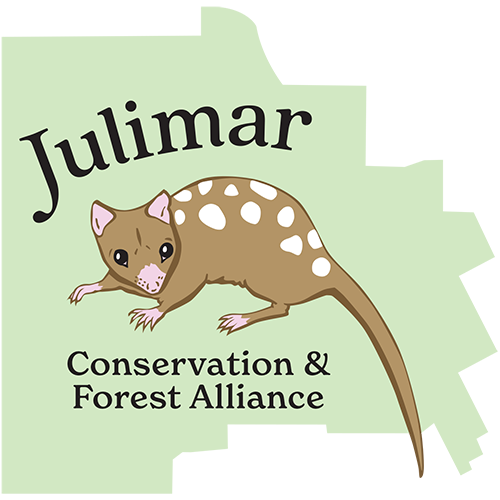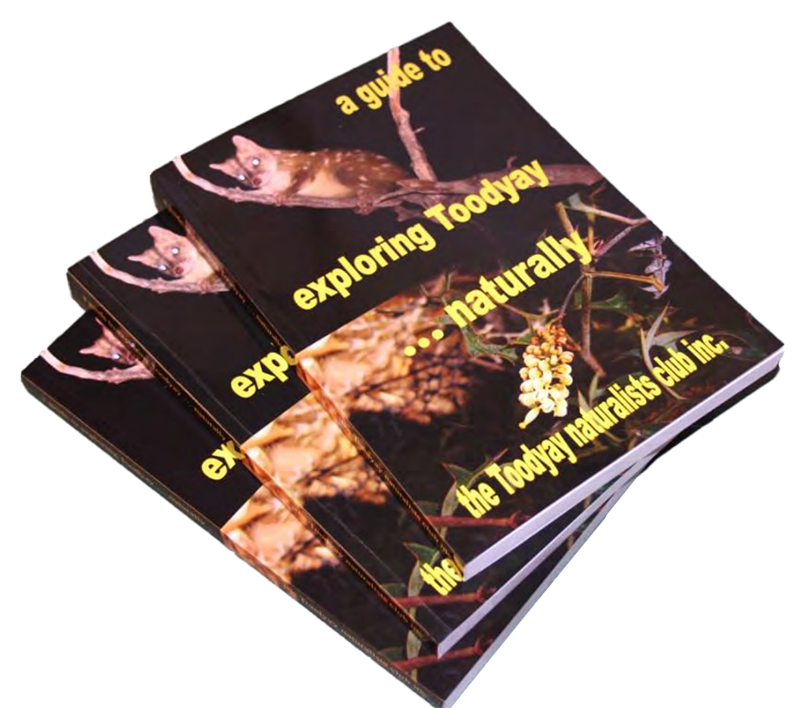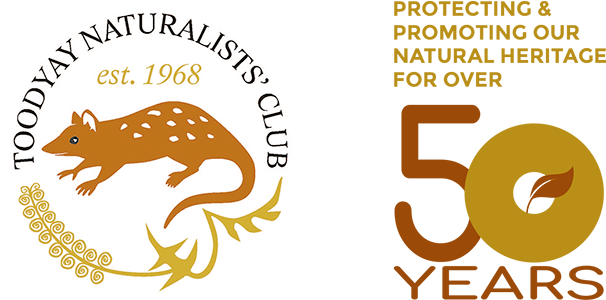By Desrae Clarke
It was a lovely surprise to catch the Southern Boobook, a member of the Hawk Owl species, drinking from a bird bath. The owl was drinking at night and filmed on a sensor camera.
The Boobook is the smallest of the Australian owls, and had not been heard, or seen, on our bush property for several years.
The owl is found in a variety of habitats and landforms from rainforest to arid areas, woodlands of the wheatbelt, heath, Jarrah, Karri and Tingle forests. It is found in all states of Australia.
The face of the Boobook is whitish with some brown markings. The eyes may be orange-yellow to green-yellow. The black-tipped bill is blue-grey. It has brown shoulders and back that are spotted white with the tail and flight feathers barred a dark brown. The underparts of the body are dark brown and dull white.
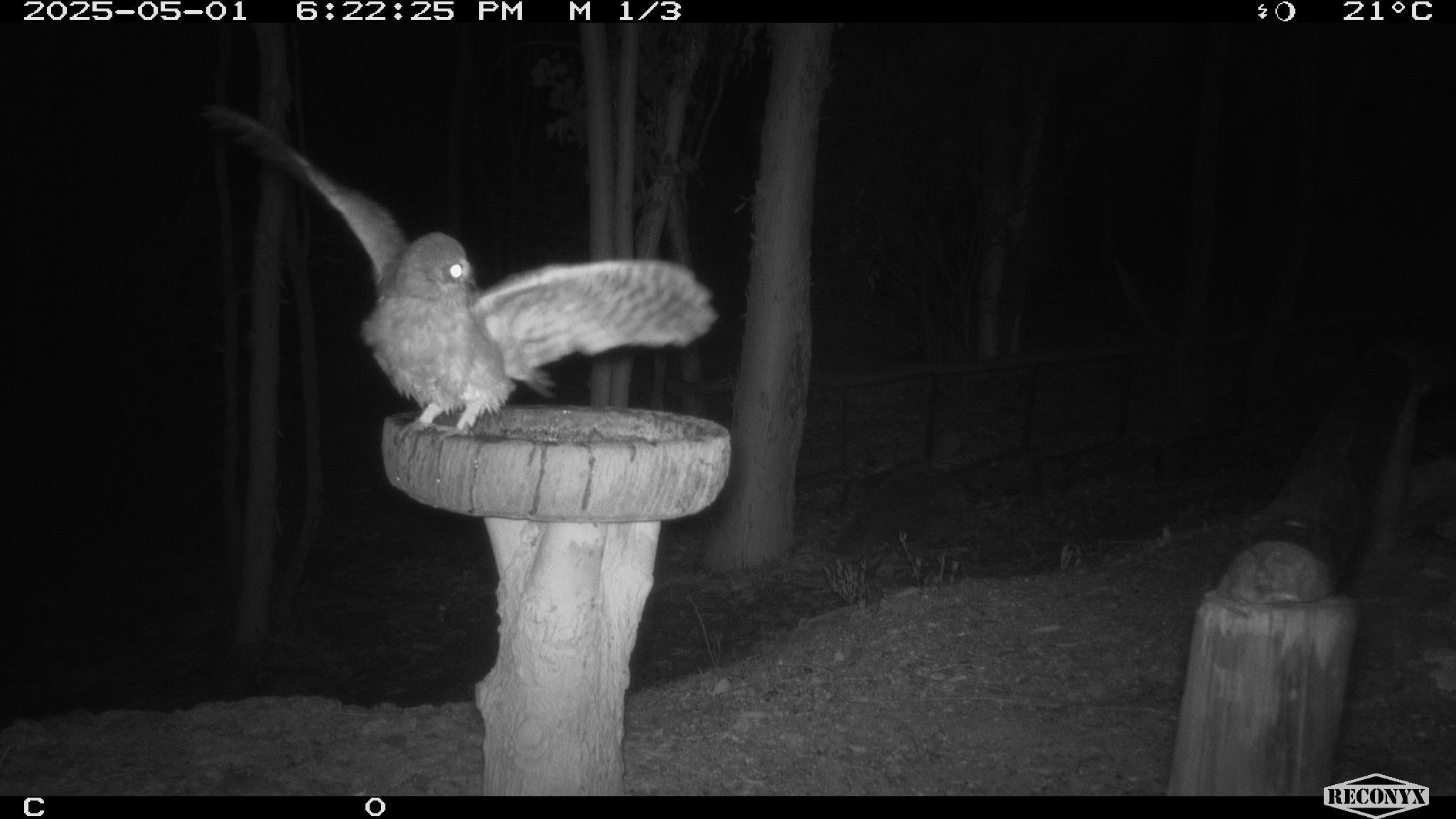
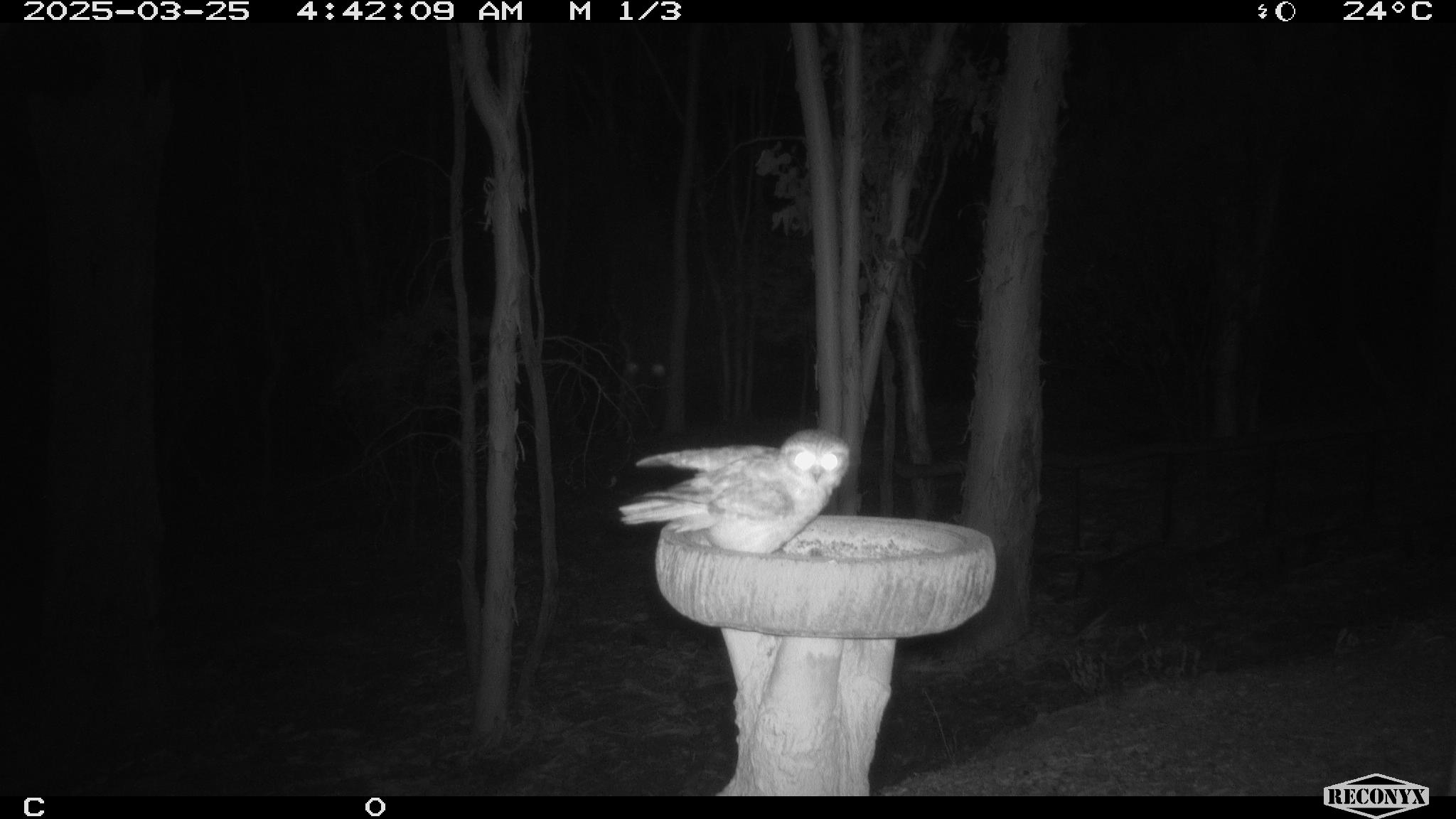
The Boobook Owl caught on trail cam. Photos: Wayne Clarke.
The Boobook has large, tubular, forward-directed yellow eyes that are capable of acute binocular night vision. They are placed forward on the head with the bird having to move its head to see anything that is not directly in front.
The owl’s very flexible neck allows it to twist its head to look over its back. The Southern Boobook ranges in size from 25-35 cm.
The female bird is the larger of the pair and breeding takes place between August and December. Two to three eggs laid in a tree hollow on a bed of crumbling wooden pieces.
The incubation period is from twenty-six to thirty-three days.
Hatchlings are covered in white down, and have powder-blue coloured eyes. The young fledge at five to six weeks. The owl feeds at dawn and dusk on small reptiles and mammals. Food includes the house mouse, as well as night-flying moths and beetles.
The owl is often seen at night either sitting in the middle of the road or on the verge, appearing to be injured. However, it is waiting for the moths and beetles that fly towards the lights of passing vehicles.
The call of the adult Southern Boobook is the familiar ‘mokepoke, mokepoke, mokepoke’. However, the juvenile call has a whistling cricket-like trill. We were extremely fortunate to hear this call at approximately 9.30pm. Initially, we thought it was a cricket. However, the rate of the call was different from that of a cricket.
It was difficult, at first, to locate the bird as it continually turned its head and the call radiated from all different directions. Eventually the little owl was found sitting on a branch and was photographed.
This article was published in the April 2025 edition of the Toodyay Herald, p. 32.
The Toodyay Naturalists’ Club welcomes sightings and observations of flora, fauna and all areas of natural history. To add your sightings, email secretary@toodyaynats.org.au or submit a sighting via our online form.

The Boobook Owl. Photo: Wayne Clarke.
